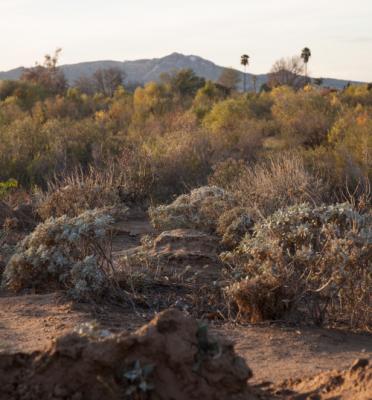Jenene Nagy: Review by Sam Hopple

Jenene Nagy’s Mass at PDX CONTEMPORARY ART is an open invitation to challenge what we experience in our relationship with the physical world. What is painting? What is drawing? What is object? Through visual risk taking and experimentation, these concepts are investigated and become successfully re-defined. Primarily known for her ambitious graphite drawings and large-scale installations, the two disparate mediums are now beginning to merge and intersect. Nagy makes a jump in Mass, overlapping photography, printmaking, drawing, and sculpture to transport the viewer into an imagined space of a sleek Southern California desert with a Minimalist aesthetic. - The inclusion of a giant vinyl photograph of the desert landscape near Nagy’s home in the Inland Empire brings an unexpected energy to the space. The full color photograph dominates with its presence, separating itself from the sea of black, grey and white tones of the works surrounding it. The photo serves as a physical manifestation of Nagy’s desire to work and live in Los Angeles. Its incorporation into the exhibition has her navigating new territory, as photography is not something that comes to mind when thinking about her work. Ghost Palm, a white lacquered palm tree taken from her backyard also serves as a symbol of place and as a more subtle homage to the desert. Blending with the walls of the gallery, the piece seems to almost disappear. Perhaps this is the artist’s way of asking us to look harder. -A standout sculpture, temporary monument, raised on blocks of salt rock and a glass pedestal, is a geometric form made with graphite and paper. That these materials are recognizable as the foundation for Nagy’s laborious drawings indicates that the artist is testing something here. It brings to mind a quote from theorist and artist Robert Smithson, who in reference to Donald Judd’s work in 1965, wrote “The more one tries to grasp the surface structure, the more baffling it becomes. The work seems to have no natural equivalent to anything physical, yet all it brings to mind is physicality.” - Though it may be better not to over think these things, thinking is a tool that activates the work. The word “physicality” is defined in the Cambridge Dictionary as, “the quality of being full of energy and force.” The object, the platform, and the foundation all allude to this piece as something out of the ordinary. Could this piece be considered a drawing? While it is a bit of a stretch to think about the work as something it is not, there are rewards to embracing the mental push. In questioning the appearance of being, and contemplating what is in front of us, Nagy’s work eventually reveals itself as something unexpected, once you try to get on her level.
This mind-game of looking runs through the veins of all the works in the exhibition. In the same way we are asked to question object as drawing, we can question drawing as object. Nagy’s folded paper drawings have evolved contextually in Mass, along with the evolution of her own studio practice. Still referencing gemology and economic class as they did in brilliant at PDX in 2014, the drawings now have a stronger conceptual focus on form. Through physical manipulation of the paper and rigorous mark making, these drawings have undergone a metamorphosis of sorts, becoming three-dimensional, and sculptural. Small gestures lead to the creation of something present, and over time, dominant. This process, while meticulously repetitive in nature, is both meditative and transformative.A suite of oil monoprints of varying size entitled Weight, are also included in the exhibition, and while Nagy does not consider herself a printmaker, the technical skill in this body of work makes it easy to disagree. The suite is created using a three dimensional silk collagraph plate, and the resulting images express a range of light and dark, like you’re walking through the Denman Ross Value Scale. These diamond-patterned achromatic gradients have a varying visual weight to them as they shift and change in their densities. The plate is also cleverly on display as a mounted sculpture, housed within a wooden frame and is a strong stand-alone piece. Its use as the object that produced the images surrounding it brings us back to process and the simplicity of the repeated act, a strong theme in Nagy’s drawings. - The works in Mass are a departure from what Jenene Nagy has shown in the past, and seeing an artist shift their practice and experiment in this respect is refreshing. Though it is unexpected to see the works in Mass together, the shift seems to be a natural progression into what upcoming shows could look like. There is a permanence in her work, and she has seems to possess the rare ability to alchemically conjure things in the simplest way using the gift of time. In the same Smithson piece regarding Donald Judd he states, “Judd is not a specialist in a certain kind of labor, but a whole artist engaged in a multiplicity of techniques.” It seems Nagy is on her way. - See more at: http://60inchcenter.tumblr.com/post/142037073979/mass#sthash.6DeEPFnw.dpuf